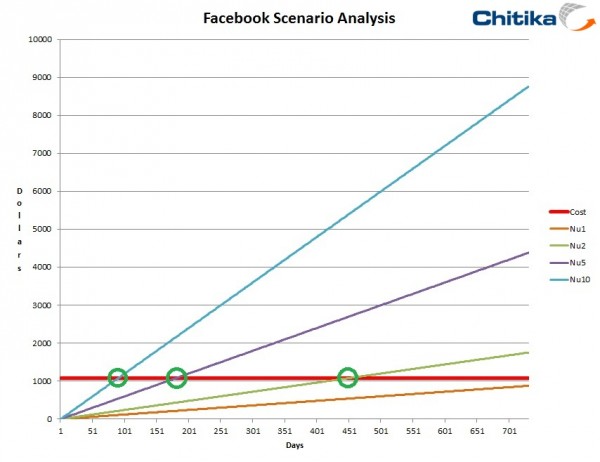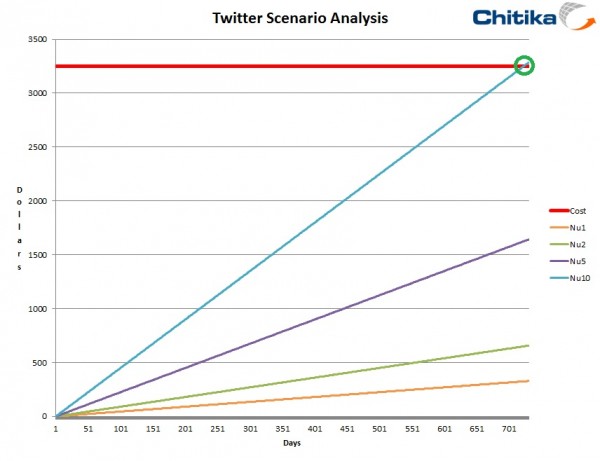Measuring The Value And Success Of Targeted Social Media Marketing Campaigns
Whether engaging in a multi-channel advertising campaign or simply trying to expand your online presence, Social Media is one platform marketers cannot afford to miss as we move into 2012. Several leaders have emerged as viable options for marketers to engage with their target audience to an extent which would not have been imaginable a […]
Whether engaging in a multi-channel advertising campaign or simply trying to expand your online presence, Social Media is one platform marketers cannot afford to miss as we move into 2012. Several leaders have emerged as viable options for marketers to engage with their target audience to an extent which would not have been imaginable a decade ago. But how can a marketer maximize their returns for an advertising campaign centered in Social Media?
In the following paragraphs, we will go through the different steps required to calculate the return on investment of social media users, and the impact they can have on marketing campaigns. As we delve further into this example, we will focus on Facebook and Twitter, the two leading networks in the market.
To determine the value of a social media campaign, measuring return on investment (ROI) relative to your goals is imperative to success. When measuring ROI, it is crucial to identify the known variables and how they influence the overall ROI.
ROI, in its simplest form, is just the percent of profit yielded from an investment. Mathematically speaking it is calculated as follows:

Now, let’s work out how to calculate Revenue and Cost. Let’s assign the cost of the campaign as the Cost to acquire a single user or customer (let’s call this CU) times the number of users (U); that is:

Revenue-producing events differ for different types of businesses, but using the example of a web publisher running performance-based ads, revenue is based on clicks. An advertiser will pay a small quantity (which we call a PPC, or payment per click) for each click received. Let us say that each user purchased (U) will see some number of ads per day (let’s call this NU). These users will click on ads at some rate, which we term the Click Through Rate (CTR). Therefore, the total revenue the web publisher receives per day will simply be the product of the CTR and the PPC multiplied by the number of ads seen total per day (in this case, NU * U). We can write this as:
So, we have a fixed cost upfront (Cost to acquire users) and a revenue per day associated with these users. From a business perspective, we can see that our break-even point on our investment will be when our costs and revenues are equal. Then, within an established time range (D), we can plug in and solve for the ROI of a social media campaign:

Now that we have gone over the technical calculations of ROI, identifying the cost of different social media users (CU) will be one of the first steps in applying the aforementioned methods. Being accurate in the estimation of the cost of social media users will be the key to success as many of our future calculations are influenced by this percentage.
An array of available cost estimates are available online from a variety of vendors, some reputable, some not (if pursuing a social media campaign with a vendor, make sure to read customer reviews, as some of the options may be untrustworthy). A Twitter follower can be acquired for a cost ranging from $2.50 – $4.00, according to a statistic reported in a Twitter sales pitch. The Wall Street Journal reports that, according to analytics firm Webtrends, the average cost of acquiring a fan through advertising on Facebook is $1.07.
After isolating the cost of different social network users, it becomes necessary to determine how much actual traffic, and resulting revenue, these new relationships will generate (we called this NU above). Different audiences will generate different levels of traffic; this can depend on the specific social media channels and market segment. Therefore, it is important to include in your projections several possible outcomes and their corresponding traffic.
In this web publishing example, constant levels of PPC and CTR were assumed due to their highly variable nature, which can be dependent on marketers’ target segments. PPC was assigned a level $0.25, a modest interpretation of the value of traffic on the web. The CTR of Facebook (0.24%) and Twitter (0.1%) were derived from a Chitika Insights study measuring the propensity to click among different social network users.
The graphs below display a breakeven analysis of Facebook and Twitter advertising campaigns for a web publisher with a “purchase” of 1000 users. A scenario analysis is also depicted, based on the likelihood of a fan to convert into actual page views (where NU1 is 1 page view per purchased social media user, or even parity, NU2 is traffic conversion at 200% parity, and so on).
Facebook breaks even in as early as 90 days in NU10, the most fortunate scenario, but takes as long as 446 days in NU2, the second worst. Facebook fails to break even within a two year horizon in the first scenario. Twitter fails to break even in the two year timeline in all but the best outcome, where it only breaks even after 723 days.


The analysis above clearly shows that Facebook campaigns appear to break even before Twitter, but why is this? First and foremost, the cost of acquiring a fan on Facebook is much cheaper than on Twitter (by almost three times as much). Secondly, Facebook’s CTR of 0.24% exceeds that of Twitter’s user base by more than two times, and further supports a higher monetization.
However, PPC was held constant in this case, which works in Facebook’s favor. If in reality, the marketing campaign was focused on a high-value, highly targeted segment of the market, advertising on Twitter may prove to break even first. The proposed rates chosen for the rate of actual traffic conversion are also just that, so to ensure a valid ROI estimate it is fundamental to select assumptions which are reflective of a broad range of outcomes – both good and bad.
Ideally, every social media campaign would be met with instant and great success, but the reality is that most campaigns take time and effort to deliver the best end result. In order to measure success, it is essential to define the level at which social media users convert, whether it is through page views, filling out a form, increasing brand awareness, or some other metric.
At the end of the day, ROI is just one method to measure the level of accomplishment of a social media campaign. Depending on your goals, whether they are brand awareness or message retention, ROI can be difficult to calculate, and sometimes, it may not even be applicable. All the same, whenever engaging in a campaign that requires time, effort, or money, setting expectations, regular checkpoints, and discipline are requisite in achieving your objectives no matter what the measurement of conversion.
Opinions expressed in this article are those of the guest author and not necessarily MarTech. Staff authors are listed here.
Related stories
New on MarTech